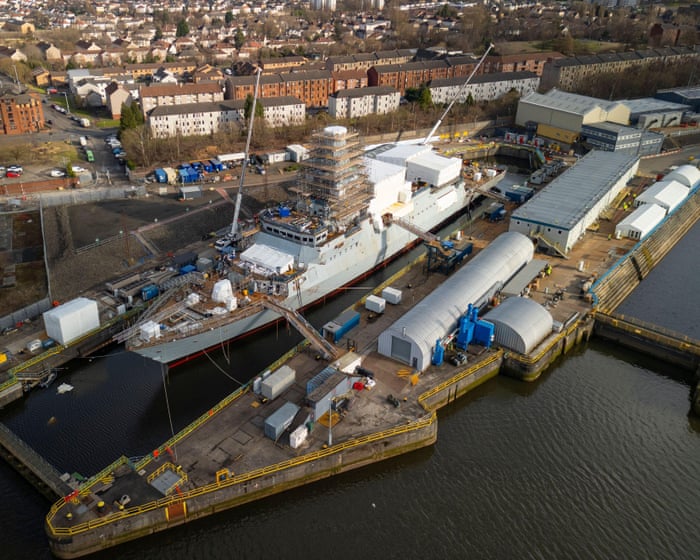Norway has agreed to a £10 billion deal for anti-submarine warships to be built in the UK, as the two countries plan joint operations in northern Europe in response to increased Russian activity.
The Ministry of Defence described the agreement to build Type 26 frigates as the UK’s largest-ever warship export deal by value and Norway’s biggest defence procurement deal. It is expected to boost the UK economy by £10 billion and support 4,000 jobs nationwide well into the 2030s.
The frigates will be constructed at BAE Systems’ shipyards in Glasgow, which are already building eight of these vessels for the Royal Navy.
UK Prime Minister Keir Starmer said the deal aligns with the government’s plan to create jobs, drive growth, and protect national security. He highlighted that the export of Type 26 frigates will support skilled employment across the UK, from apprentices to engineers.
The shipbuilding programme is estimated to benefit 432 businesses, including 103 in Scotland, 47 in northwest England, and 35 in the West Midlands.
The agreement also strengthens the long-term strategic partnership between the UK and Norway. A combined fleet of 13 frigates—eight British and at least five Norwegian—will operate together in northern Europe, significantly reinforcing NATO’s northern flank.
Defence Secretary John Healey called it a historic deal that deepens cooperation, enabling the two navies to train, operate, and if necessary, fight together. The warships will help protect critical infrastructure, hunt Russian submarines, and enhance security for both nations.
Concerns over critical infrastructure have grown following incidents such as the alleged sabotage of the Baltic gas pipeline and undersea internet cables between Finland and Estonia.
Norway, which participated fully in the UK carrier strike group’s deployment this year, also collaborates with the UK and NATO partners to safeguard undersea infrastructure in the region.
Norwegian Prime Minister Jonas Gahr Støre expressed confidence in the strategic partnership, emphasizing the shared interests and strong bilateral ties between the two countries.
Scottish Secretary Ian Murray noted that the deal highlights the success of Scotland’s shipbuilding industry and represents another defence dividend for the country.
The Type 26 frigate is equipped with advanced weapons, sensors, and communications systems, and its design allows for future upgrades to counter emerging threats.
BAE Systems CEO Charles Woodburn stated that Norway’s decision reflects confidence in British industry’s ability to deliver a superior anti-submarine warfare platform, reinforcing Norway’s maritime security and NATO role.
Frequently Asked Questions
Of course Here is a list of FAQs about Norways acquisition of antisubmarine warships designed to be clear and helpful for a range of readers
General Beginner Questions
1 What is the basic news here
Norway has agreed to a 10 billion deal to buy five new advanced antisubmarine warships from the UK
2 Who is building the ships
The ships will be built by a UK company Babcock International at their shipyards in the UK
3 What is an antisubmarine warship
Its a type of naval vessel specifically designed to detect track and deter enemy submarines They are like underwater hunters for a navys fleet
4 Why does Norway need these ships
Norway has a long coastline and borders strategically important waters in the North Atlantic and Arctic These ships are crucial for protecting its territorial waters and maritime infrastructure from underwater threats
5 How much is 10 billion in US dollars or Euros
Exchange rates fluctuate but as a rough estimate 10 billion is approximately 127 billion USD or 117 billion EUR
Advanced Detailed Questions
6 What type of ships are these specifically
They are a new class of frigate known as the Type 31 or inspirationclass frigate They are designed to be versatile but have a primary focus on antisubmarine warfare
7 Why did Norway choose a UK company to build them
The UKs Type 31 design is a modern proven and costeffective platform This deal also strengthens the longstanding defence and security partnership between the two NATO allies ensuring interoperability
8 What are the key benefits for the UK in this deal
This is a major economic win for the UK securing thousands of skilled jobs in its shipbuilding industry and reinforcing its status as a leading global defence exporter
9 What advanced technology will these ships have
They will be equipped with stateoftheart sonar systems for detecting submarines advanced combat management systems a helicopter flight deck for operating ASW helicopters and likely missile defence systems
10 When will the ships be delivered
The first ship is expected to be delivered to the Norwegian Navy in the late 2020s with all five ships completed by the early 2030s




